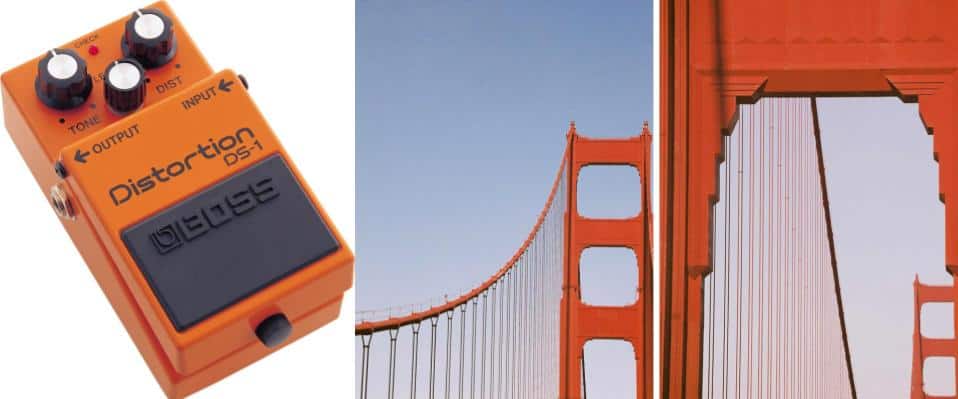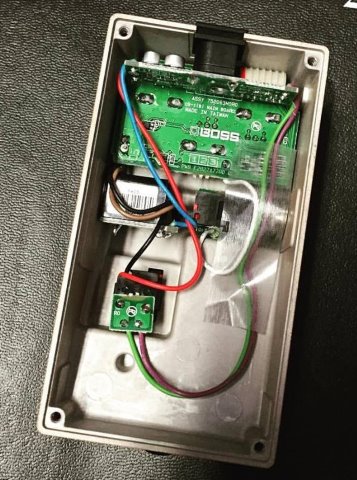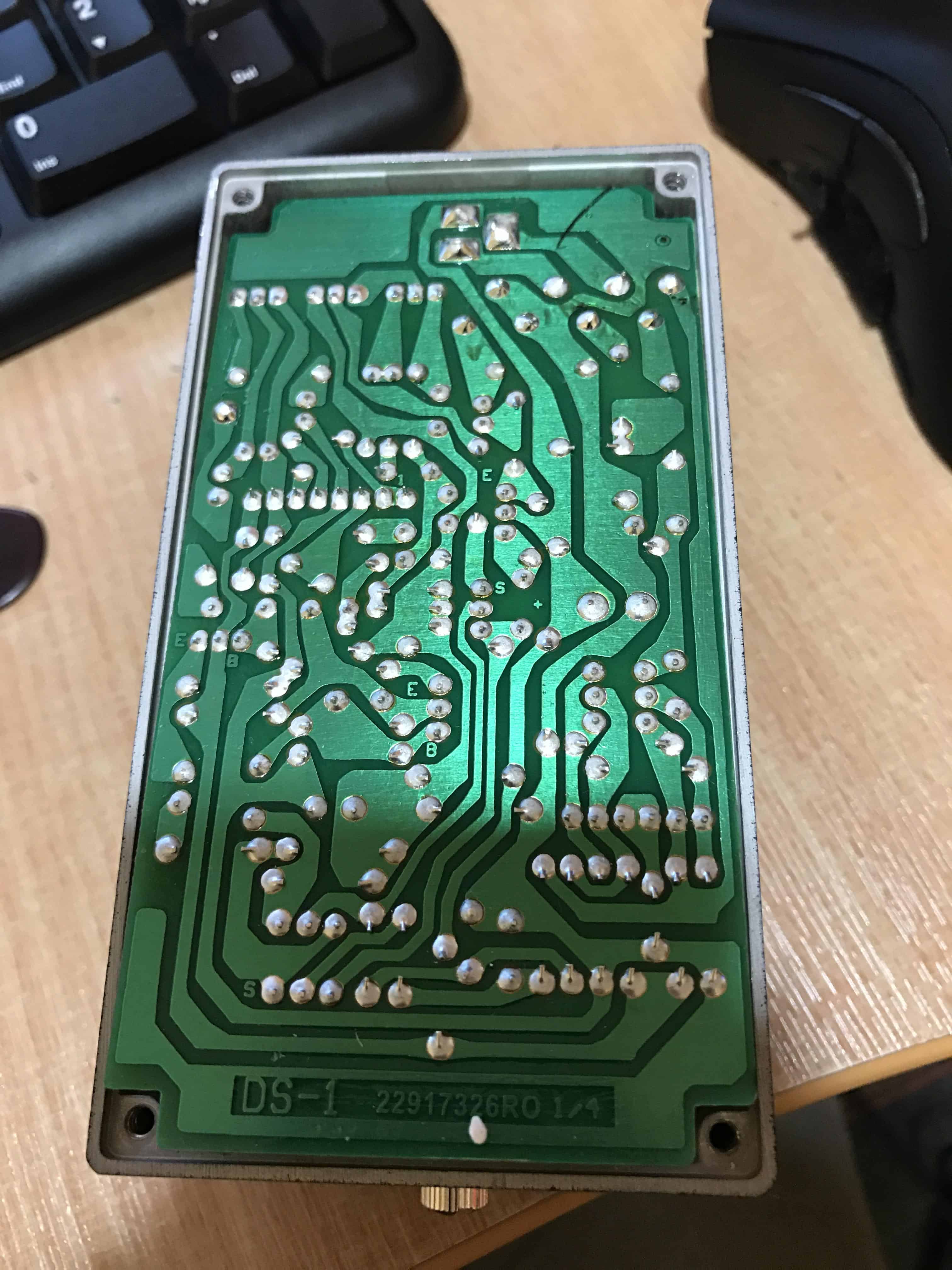
The Boss DS-1 Distortion is probably the most famous guitar pedal in history. Millions of DS-1s have been sold since its 1978 release – according to Boss’s official page, it’s their best-selling pedal ever. Its look is so iconic, if you asked a child to draw a guitar pedal from memory, they’d probably draw a little orange box with three black knobs and a little red LED on top.
The DS-1 has been an integral part of a vast number of guitarists’ setups, including:
- Kurt Cobain (source)
- Joe Satriani (source)
- Steve Vai (source)
- Mike Stern (source)
- Dave Navarro (source)
- George Lynch (source)
to name a handful. And, for a very reasonable price, you can make it part of your setup too.
Boss DS-1 Specs and Features
Like all Boss compact pedals, the DS-1 comes in a sturdy metal enclosure. It’s painted a striking shade of orange, not unlike the Golden Gate Bridge, and although I doubt this similarity is deliberate, as a longtime Bay Area resident it pleases me nevertheless.

It takes a 9V adaptor or battery. It has two big knobs for Tone and Distortion and one small knob for Level.
The Tone knob controls a tilt EQ, meaning when it cuts treble it adds bass, and when it cuts bass it adds treble. “Adds treble” is an understatement – on a bright setup, past noon the Tone control can get downright shrill. As such, I usually keep it set around 9 o clock.
The Distortion knob controls the overall amount the signal is distorted. Even at 0, it still adds a little distortion to the signal, great if you want to add a small amount of grit and sustain to your tone.
With Distortion around 3 o clock, if your input signal is hot enough, the distortion takes on an extremely squelchy, grindy character. It even sounds a little like the famed Boss HM-2 Heavy Metal pedal (see here for a more detailed comparison). If you’re trying to get an early Nirvana tone, this is the setting for you.
The Level knob is my favorite part of the pedal. It controls the overall output of the pedal and has enough output to help your amp naturally distort. This enables what is, in my opinion, the best use for the DS-1: causing natural distortion in a different drive stage.
How I Use the DS-1
My favorite way to use the DS-1 is to use a guitar with a single-coil neck pickup, roll the Distortion to around 9 o clock, turn the Level all the way up, and use it on my Marshall DSL40C combo’s clean channel. The boosted, lightly clipped signal from the DS-1 causes the preamplifier to distort in a warm, smooth way that blends perfectly with the slight crunch from the pedal.
My second-favorite DS-1 setting is to put the Distortion at noon and use it on my Marshall’s crunch channel. By blending the natural distortion with the pedal distortion, the result is a raucous, fun, and full rock sound.
Boss DS-1 Mods
Over the years, many daring guitarists have cracked open a DS-1 and modified its insides. In this article, Brian Wampler of Wampler Pedals describes a number of simple tweaks that change the overall character of the pedal. Other famous mods include the Keeley Seeing Eye Mod and the Analog Man mod.
Be forewarned, DS-1s produced after 2017 are much more difficult, if not impossible, to modify. This is because Boss has modernized the circuitry to occupy a smaller circuit board.
Cons
The DS-1 is a very useful pedal, but it doesn’t do everything. There are some things to consider when incorporating it into your rig.
- It doesn’t stand on its own as well as other distortion pedals. For the DS-1 to achieve its full potential, you’ll want to stack it appropriately with your amplifier or other drive pedals. This is in contrast to the Boss SD-1 or MXR 5150 OD, which I frequently use by themselves.
- The tone control is easily abused. It can cause a very substantial treble boost which I often find get unpleasantly shrill. Granted, my setup comprises mostly bright single coils. If your setup sounds dark, you can be assured that the DS-1 can add a lot of treble to your sound if necessary.
- It’s not high gain by modern standards. Metal guitar YouTuber Ola Englund tried and failed to make the DS-1 “chug” in a recent video, although he acknowledged that the sound was really good. The DS-1 gets you a rock or old school metal sound, but if you want to djent, you’ll need something different.
Conclusion
The Boss DS-1 is a hard-working pedal that, far from being obsolete, still has a place on your board in the 21st century. I strongly recommend you pick one up if you don’t already own one. Buy one on Amazon.



Comments (1)
Review: Korg OD-S NuTube Overdrive
September 20, 2020 at 3:52 pm
[…] a Klon-style overdrive that pushes the OD-S from crunchy into growly. I’m also enjoying my Boss DS-1, on a low drive and medium output, into the OD-S, although in that scenario I like to mellow the […]
Comments are closed.